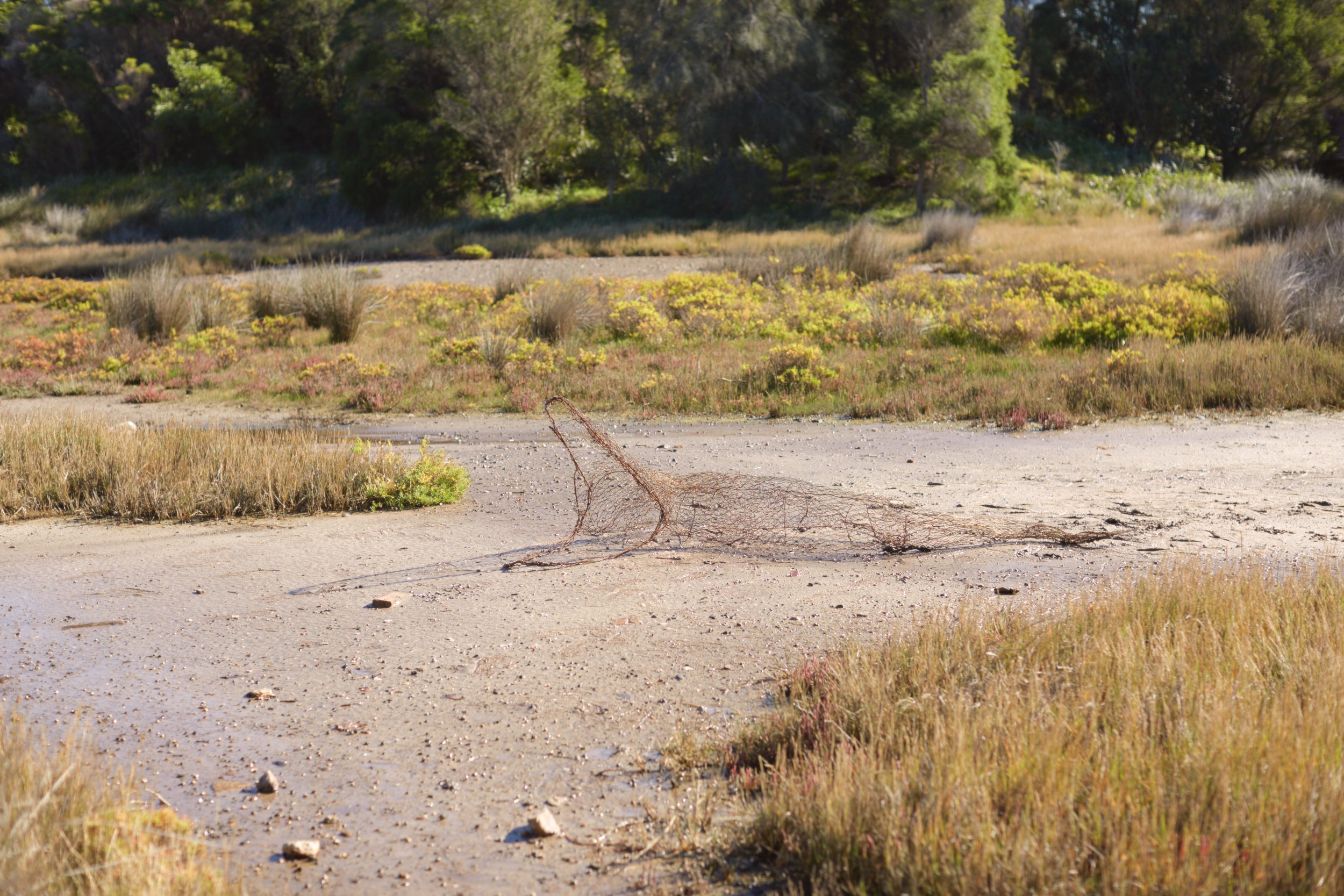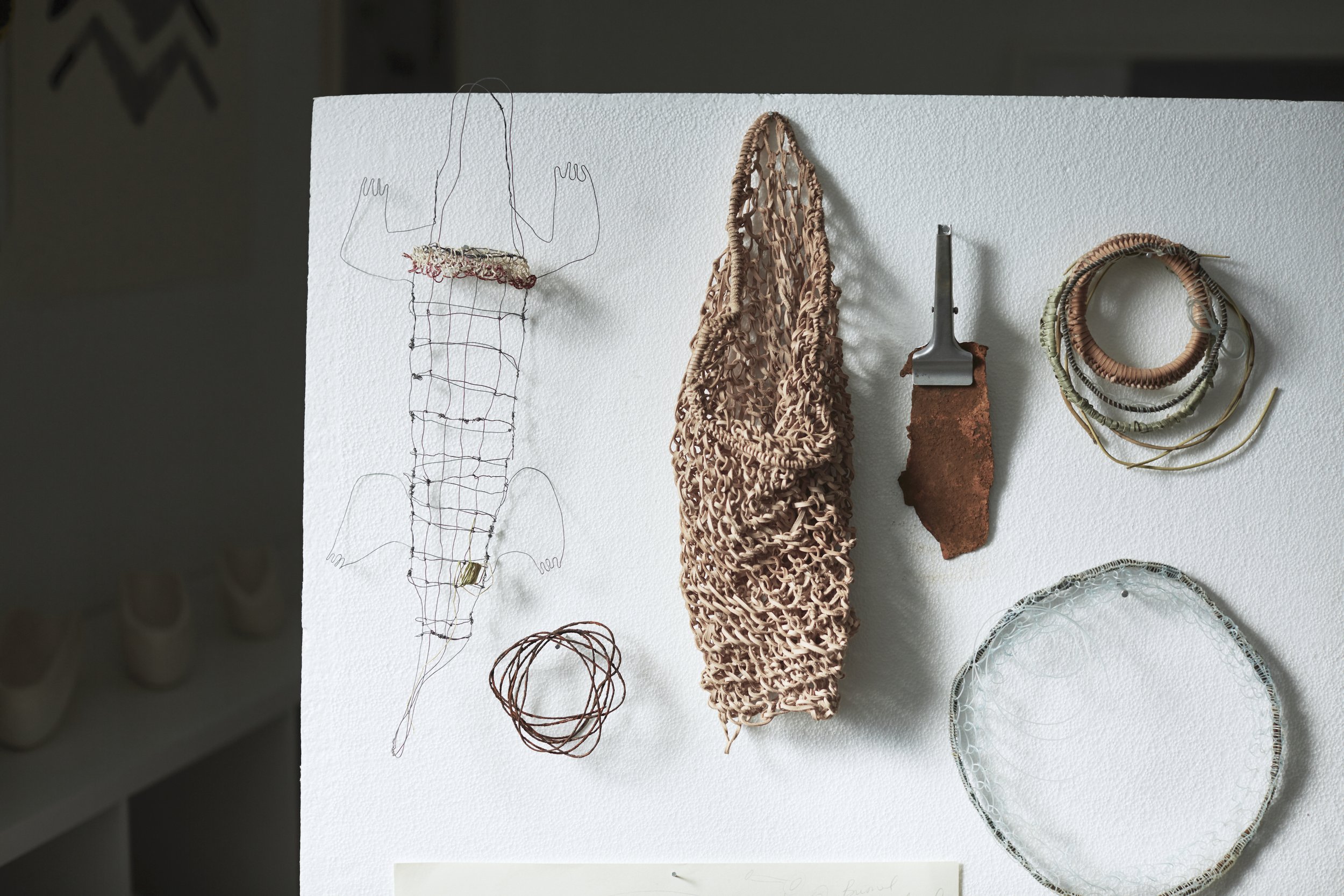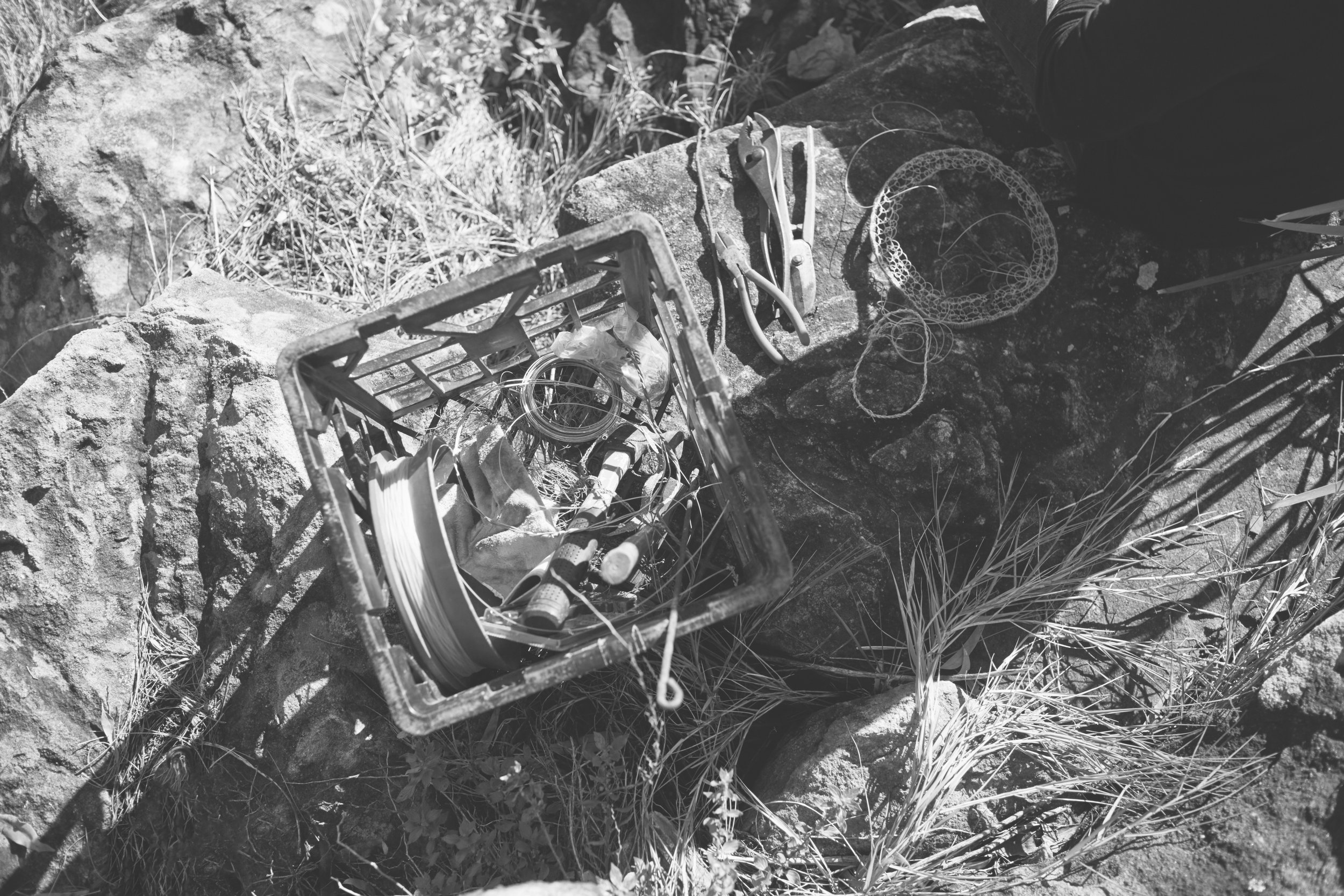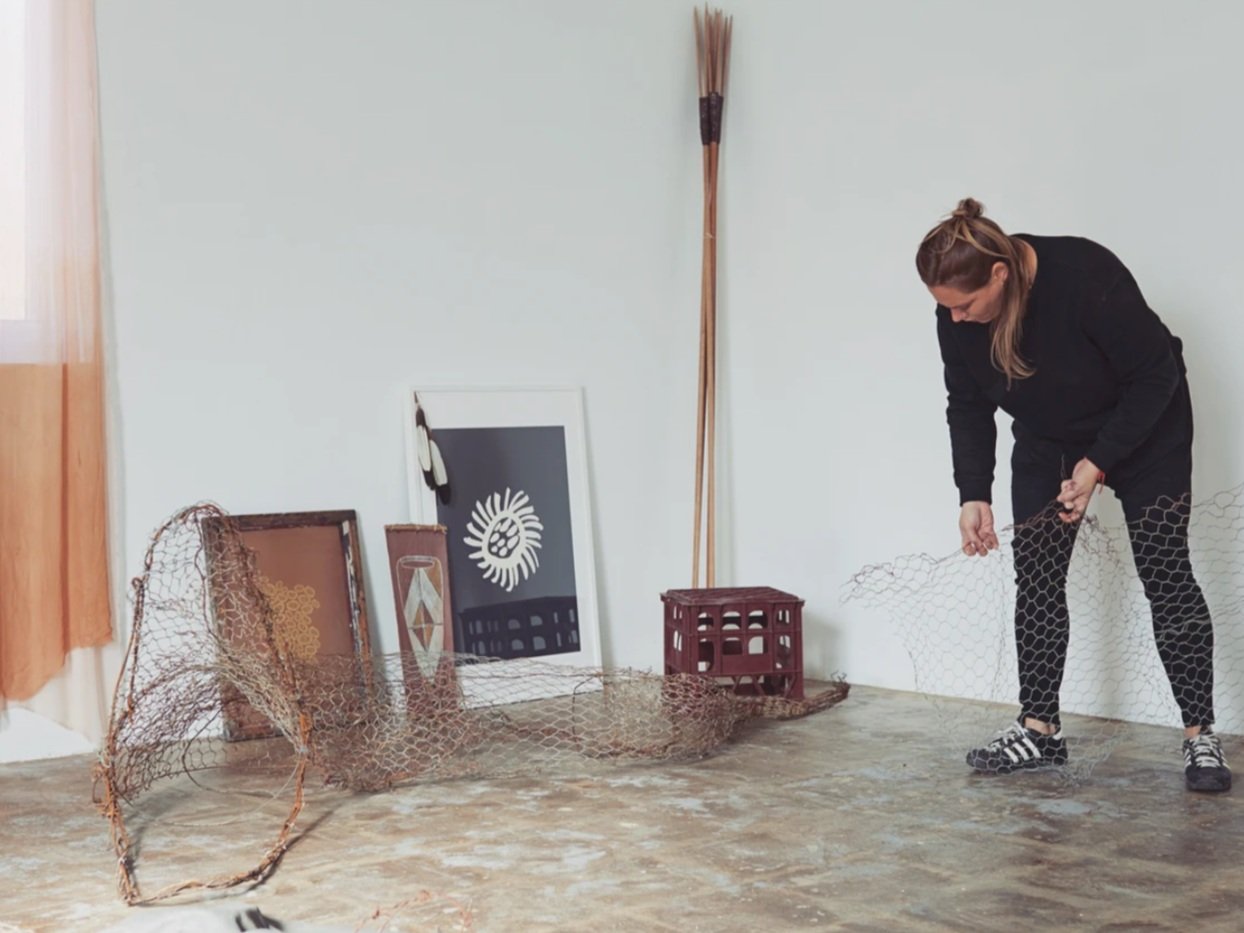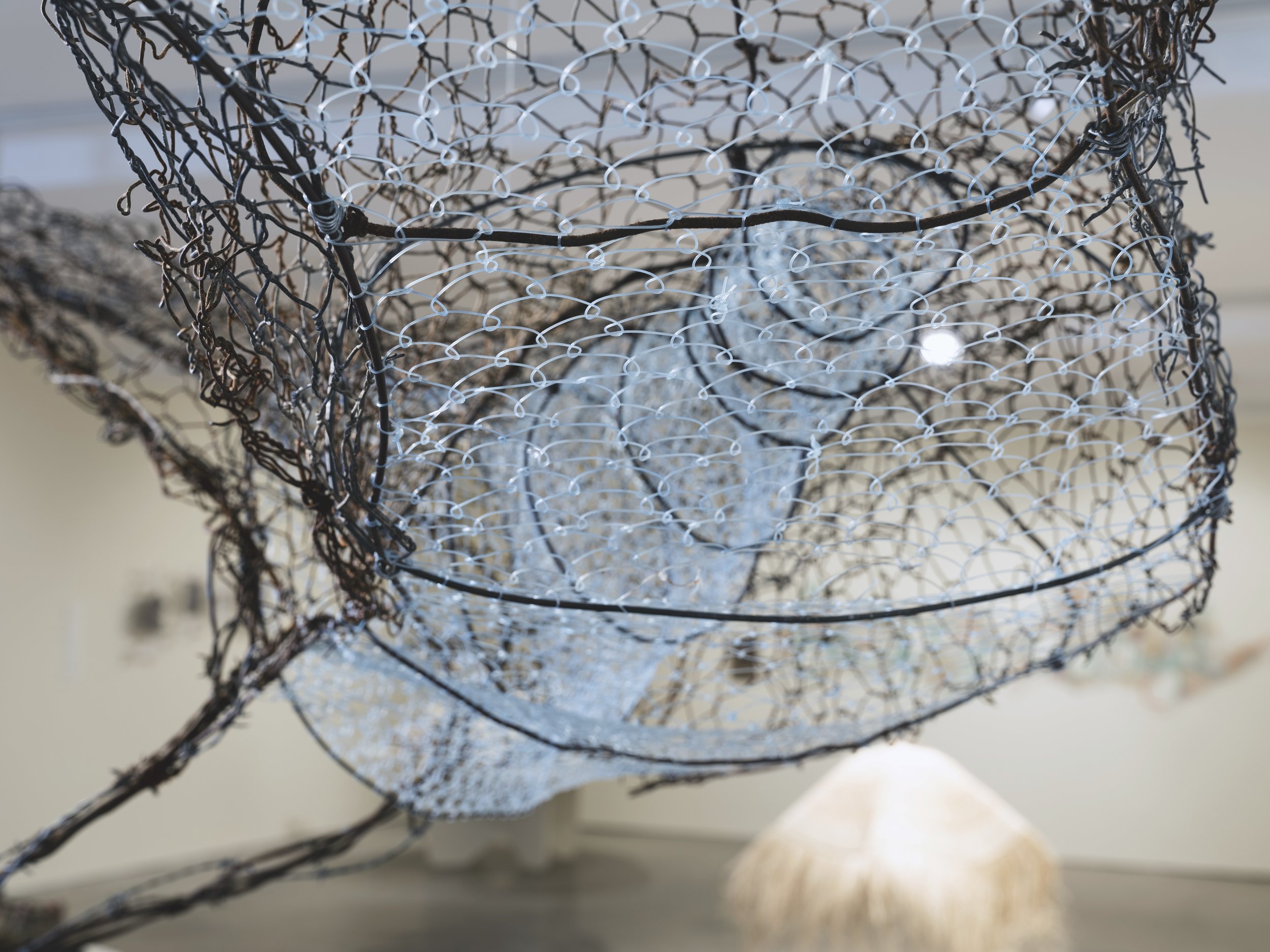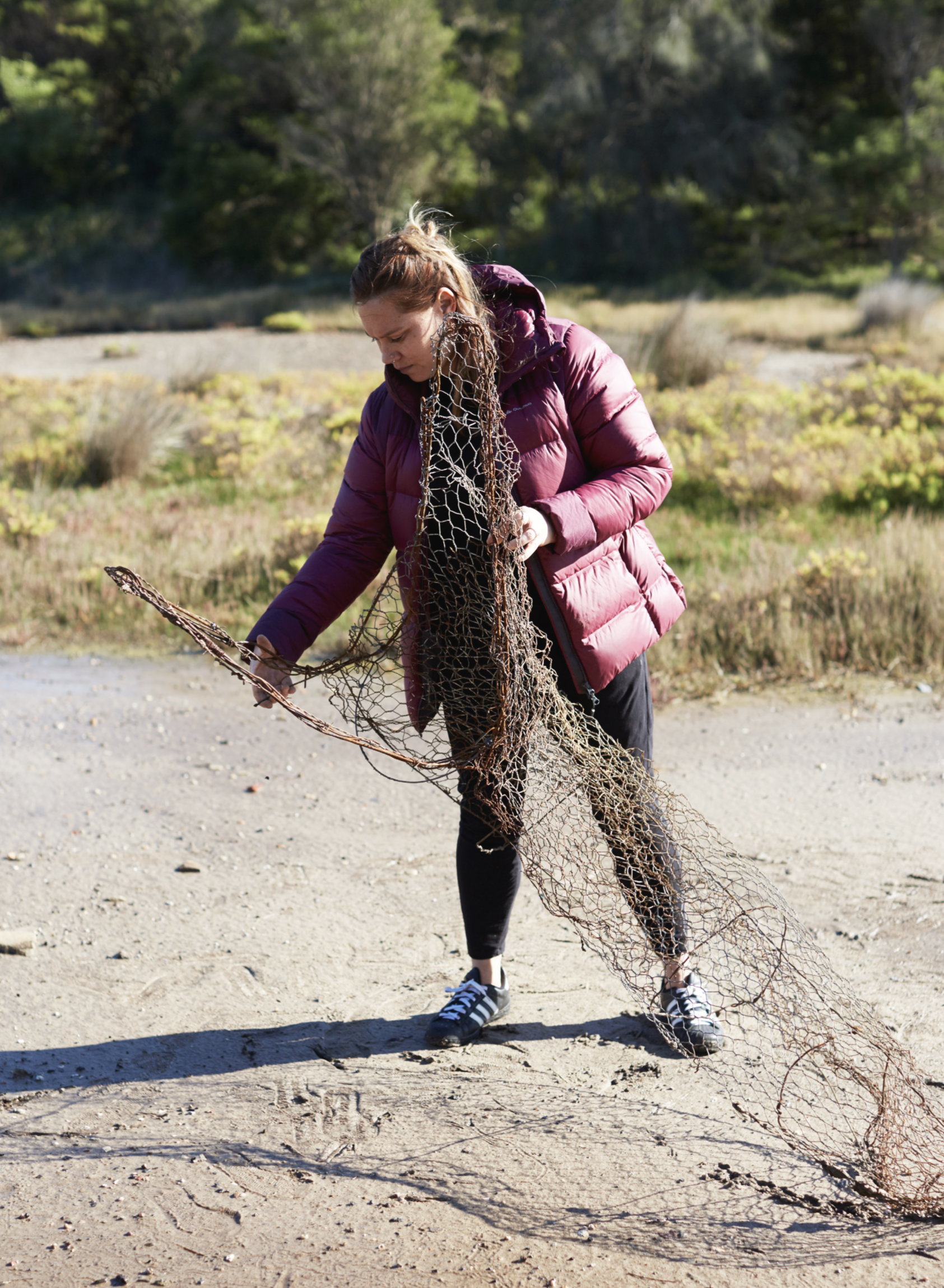LONG WATER - FIBRE STORIES: INSTITUTE OF MODERN ART
GUNGANDHI
On Yuwaalaraay country, Lucy Simpson’s floating sculpture Gungandhi (2020) speaks of unbroken responsibility between people and country. At the time of making Gungandhi, the fresh water rivers and lakes of Simpson’s Ancestors had dried up. Just as these waters were hurting—significant river networks, once full of fish and mussel shell, no longer flowing—so too were the animals, trees, plants, culture and people that are usually supported by this lifeline. The reality of her country’s suffering confronted Simpson during a visit home, where she encountered an enormous metal fish trap embedded in the dry riverbed. Having been abandoned there, the trap came to symbolise for the artist a broader disrespect for our waterways, and a disconnect with our duty for their care. In response, her work communicates ‘a story of water, responsibility and consequence’, guided by her people’s creation beliefs. Specifically, she tells the story of the first beings who broke law and were consequently swallowed whole by crocodiles.
Simpson’s weaving transforms the harsh remnants of industrial agriculture— abandoned fencing wire and mesh gathered on her country—into a large vessel inspired by the crocodile being. Like the rivers connected to Walgett, Lightning Ridge and the Angledool region, this form also holds memory of place through the inherent qualities of the materials. Viewed in one way, the presence of rust and discolouration in the metals suggest a material and symbolic exhaustion, but viewed another way, they point to the natural changes of landscapes and seasons. Overarching these signs of transition or different states of being is a sense of robustness in the metal form that mirrors the resilience of Simpson and her people’s connection to country.
- Excerpt from exhibition catalogue by Curator Freja Carmichael.
—
Exhibition: long water: fibre stories Curated by Ngugi woman Freja Carmichael illuminates spiritual, ancestral, and physical connections to water through fibre practices of artists from Yuwaalaraay (North West NSW), Quandamooka (Moreton Bay, South East QLD), Kuku Yalanji (Far North QLD), Zenadh Kes (Torres Strait Islands, QLD), Yurruwi (Milingimbi Island, NT), and surrounding homelands. Together this group—Aboriginal and Torres Strait Islander women, spanning different generations and ancestries—share an inseparable relationship to water, be it the vast sea, inland waterways, or expansive river systems.
Water places have always been a well-spring of vitality, knowledge, and connection for people and culture, yet these sites also resonate with the experiences of colonisation, difficult histories, and the pressing environmental concerns of today.
Similarly, fibre work communicates a strong sense of history, place, and knowing, found in the meanings, materials, and processes of production. In long water, artists embed the links between water and weaving in intricate forms, layered prints, and spirited installations that are guided by ancestral memory and grounded in personal interpretations.
Collectively, long water celebrates the stories of regeneration and continuation of important cultural traditions, and the strong women and vital water places that sustain them. The country, and wide range of environments, practices, and knowledge represented speak to both deep time and contemporary experiences—bringing into focus the importance of water to our cultural health and our capacity for resilience.
—
Images courtesy Chris Chen and Institute of Modern Art.
